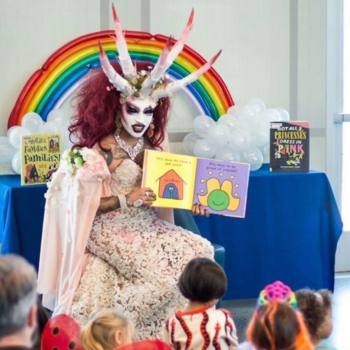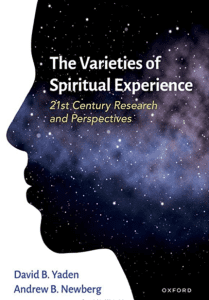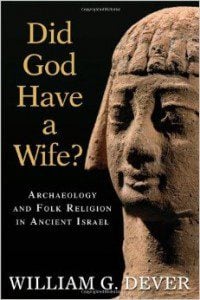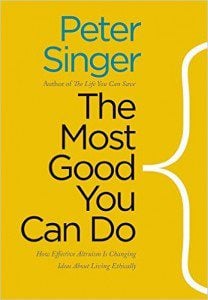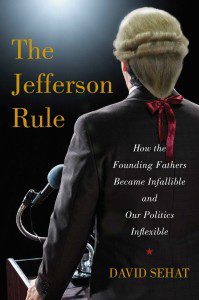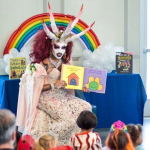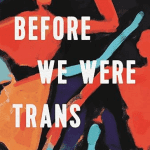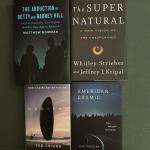I first heard Margot Adler’s voice on the radio — along with Lourdes Garcia-Navarro, Lakshmi Singh, Sylvia Poggioli, Ofeibea Quist-Arcton, Kai Ryssdal, and so many others. I learned their names through repetition as they signed off at the end of new stories on “Morning Edition” or “All Things Considered”: Margot Adler, NPR News, New York. There were many opportunities to hear Adler, who was an NPR reporter for more than three decades prior to her death from cancer in 2014 at the far too young an age of 68.
When I first began learning more about the Sixth Source of Unitarian Universalism (“Spiritual teachings of earth-centered traditions which celebrate the sacred circle of life and instruct us to live in harmony with the rhythms of nature”), two books — both published on the same day, Halloween 1979 — were recommended to me as starting points:
- The Spiral Dance: A Rebirth of the Ancient Religion of the Goddess by Starhawk
- Drawing Down the Moon: Witches, Druids, Goddess-Worshippers, and Other Pagans in America by Margot Adler.
It took me a while to make the connection, but then I realized: Wait! Margot Adler on NPR is the same Margot Adler that wrote one of the definitive guides to the modern pagan movement in the U.S.?! As it turns out, yes. Adler was also a Unitarian Universalist, a member of Unitarian Church of All Souls in New York City, and an active board member for many years of the national board of the Covenant of UU Pagans (CUUPS).
Margot Adler’s father was a therapist. He was also the only son of the famous psychotherapist Alfred 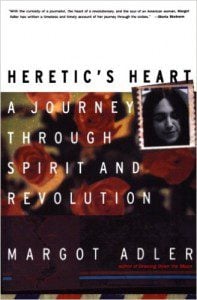 Adler (1870 – 1937), the founder of the school of thought known as “individual psychology” and a close collaborator with both Sigmund Freud and Carl Jung — before the various schisms that later divided them. “Alfred Adler is remembered for the terms ‘inferiority complex,’ ‘lifestyle,’ ‘compensate,’ and ‘overcompensate.’ He discovered the importance of birth order, and emphasized the importance of power issues…over sexual ones.” Margot was the famous Dr. Adler’s only grandchild. And in her autobiography, Heretic’s Heart, Margot writes regarding this heritage that, “I was both proud of it and wary.” And choosing not to follow in her father’s and grandfather’s footsteps, she finished college without taking a single psychology course (38)!
Adler (1870 – 1937), the founder of the school of thought known as “individual psychology” and a close collaborator with both Sigmund Freud and Carl Jung — before the various schisms that later divided them. “Alfred Adler is remembered for the terms ‘inferiority complex,’ ‘lifestyle,’ ‘compensate,’ and ‘overcompensate.’ He discovered the importance of birth order, and emphasized the importance of power issues…over sexual ones.” Margot was the famous Dr. Adler’s only grandchild. And in her autobiography, Heretic’s Heart, Margot writes regarding this heritage that, “I was both proud of it and wary.” And choosing not to follow in her father’s and grandfather’s footsteps, she finished college without taking a single psychology course (38)!
Growing up in a secular Jewish home, when she asked about her family’s religion, she was told, “We believe in the brotherhood of man” (42). And in a classic case of the “grass always looks greener on the other side,” she writes that from her childhood perspective, “the Brotherhood of Man seemed pretty sterile, despite its high ethics, and I grew up believing that my Catholic friends had a better deal” (43). Many of her friends probably thought the same thing about her family. Interestingly, for high school Margot attended the performing arts school that was the inspiration for the film Fame. And in seeking to incorporate an artistic, feminist, ecological perspective into what she calls her “semi-Marxist,” “Brotherhood of Man” childhood, she writes:
In our either/or obsessive world, people go from one totalistic belief to another…. Skepticism and mystery are sworn enemies. You are either a socialist or a capitalist…. You are either a skeptic or a believer….it’s all or nothing. Either you think LSD will save the world, or you think everyone who takes it will lose [their] mind….
The word of the Old Left had great truths, but…it could not bridge these divisions. It was too afraid of the irrational and its pull, and it did not really understand the human need for the voice and mystery of ecstatic experience; it did not realize that one can enter the flow of the mysterious, the non-ordinary reality known to all artists, poets, and indigenous peoples without losing one’s intellectual integrity; that one can dance round a bonfire until dawn and still make one’s living as a scientist or a computer programmer; that one can work to end poverty and exploitation but still embrace song and dance and dream. Like shamans of old, we can attempt to maintain our balance as we [move] in different worlds. (298)
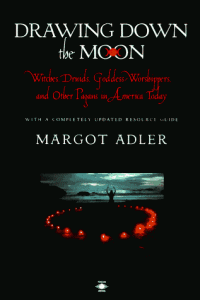 Margot’s interest in exploring the mysterious, ecstatic, and non-ordinary — while maintaining her day job at NPR — led to the extensive travels and interviews that were compiled into her 646-page brick-of-a-book, Drawing Down the Moon: Witches, Druids, Goddess-Worshippers, and Other Pagans in America.
Margot’s interest in exploring the mysterious, ecstatic, and non-ordinary — while maintaining her day job at NPR — led to the extensive travels and interviews that were compiled into her 646-page brick-of-a-book, Drawing Down the Moon: Witches, Druids, Goddess-Worshippers, and Other Pagans in America.
I mentioned earlier that this book was originally published on Halloween in 1979. A completely revised and updated third edition was released in 2006. To reflect on some of the changes in the religious landscape over the last three-and-a-half decades, the best estimates are that in the early 1980s, “modern Pagans, Heathens, Druids, and Wiccans in the United States numbered less than [100,000] people. Today many estimates are four to seven times that number, with more than a million worldwide” (ix). The rapid growth of that movement within Unitarian Universalist circles led to the addition of our Sixth Source of “Earth-centered spirituality” twenty years ago in 1995. And in the congregation I serve as minister, we recently had a surprising 336 people attend our first Pagan Pride Day — more than three times the crowd we expected.
From a much broader historical perspective, one of the most important points to remember is that the negative connotations that some people have with the words “pagan” and “heathen” are of relatively recent origin. Even for centuries after the life of the historical Jesus, the Latin word paganus simply meant “peasant.” Likewise, the word heathen originally meant someone from the “heath” — someone who lived in the country, not the city. And as Christianity (which was primarily an urban phenomenon) rose in prominence in the Roman Empire, those “pagans” and “heathens” who remained in the country and retained their pre-Christian, ancestral, polytheistic, nature-based religions came to be seen as infidels, idolators, and heretics — but those terms were not how they saw themselves; they were merely the negative labels given to them by Christians.
A related confusion is the conflation of Neo- paganismwith Satanism. That view is yet another result of seeing the world from a theologically-conservative Christian perspective. Neo-pagans seek to retrieve pre-Christian traditions — reinterpreting the mythology, gods, and goddesses (those archetypes of the divine masculine and the divine feminine) from the ancient Greeks, Romans, Egyptians, and Sumerians. In contrast, Satanism is grounded within the Christian tradition in which Satan is revered as a “symbolic figure of rebellion” against the Christian God (477).
As a result of such confusions, when Adler was first doing interviews after the release of Drawing Down the Moon, she found herself frequently facing questions based on ignorant stereotypes: “‘Why do you have black hair?’ (I was born that way) and ‘Is that scar on your leg from a ritual?’ (No, I cut myself shaving)” (460). Looking back at that time period, she says that, in the media, there seemed to be only five basic stories:
- the perverted individual who was killing animals and calling themselves a Witch;
- a custody battle between a couple, usually one of them a Witch and the other a Christian;
- a Wiccan gathering that was picketed by fundamentalists;
- a bill that would take away tax-exempt status from Wiccan religious groups;
- a trial of someone for murder who was supposedly a Witch (461).
But in the ensuring three decades, books such as Margot’s have helped increase awareness of how most Neo-Pagan speak for and about themselves:
[They] sense an aliveness and “presence” in nature…. They share the goal of living in harmony with nature and they tend to view humanity’s “advancement” and separation from nature as the prime source of alienation. They see ritual as a tool to end that alienation…. They gravitate to ancient symbols and ancient myths, to the old polytheistic religions.… They are reclaiming these sources, transforming them…. They do not regard pleasure as sinful, nor do they conceive of this world as a burden. While many of their members lead quite ordinary, and often successful, lives in the “real world,” they are able to detach themselves from many of the trends of the day, maintaining a sense of humor, a gentle anarchism, and a remarkable tolerance for diversity…. This religious movement…is only partly an “occult” phenomenon [dealing without “that which is hidden or beyond the range of ordinary apprehension and understanding”]. Often it is interwoven with the visionary and artistic tradition, the ecology movement, the feminist movement, and the libertarian tradition (4-5, 466)
Many ritual within the Pagan tradition are attuned to the eight points on the Wheel of the Year: the two equinoxes (fall and spring), the two solstices (winter and summer), and the four cross-quarter days, exactly in between those first four major points. And the next major point on the Wheel of the Year is Samhain, also known as Halloween or All Hallow’s Eve.
And appropriate for this current point on the Wheel of the Year, there is a final part of the legacy of Margot Adler that I would like to share. In May of 2009, Adler was on the way to a conference and looking for a light “airplane read.” She ended up buying the first novel in the Twilight Saga, and read that book on the way there and the sequel on the flight home. She had never previously been particularly interested in vampires, and may well have never read another vampire book, except that ten days later her husband of thirty-five years was diagnosed with terminal cancer.
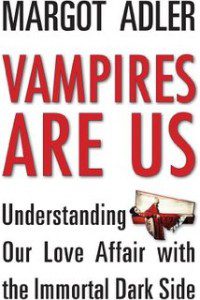 Similar to the reason why “Anne Rice began her huge saga, the Vampire Chronicles, because she was dealing with the death of her young daughter,” as Adler’s beloved husband lay dying of cancer, she found herself drawn to reading about vampires because she was “thinking about mortality” (5). She kept a list and in total read more than 270 vampire novels during this time (ix). She eventually published her reflections in her third and final book Vampires Are Us: Understanding Our Love Affair with the Immortal Dark Side — in which she reflects on why she, and our wider culture more broadly, have been drawn at various points to the vampire archetypes.
Similar to the reason why “Anne Rice began her huge saga, the Vampire Chronicles, because she was dealing with the death of her young daughter,” as Adler’s beloved husband lay dying of cancer, she found herself drawn to reading about vampires because she was “thinking about mortality” (5). She kept a list and in total read more than 270 vampire novels during this time (ix). She eventually published her reflections in her third and final book Vampires Are Us: Understanding Our Love Affair with the Immortal Dark Side — in which she reflects on why she, and our wider culture more broadly, have been drawn at various points to the vampire archetypes.
One of the keys to Adler’s understanding of the vampire archetype is an insight from a scholar that, “Every age embraces the vampire it needs” (35). For example, Bram Stoker’s Dracula was published in 1897 England, a time when that country had “some of the largest ports in the world.” And Stoker’s novel reflects the fears at the time about immigration through the lens of Dracula, “an Eastern European monster, dark, mysterious, and alien” (35-36). Similarly, “in the 1980s, just as the AIDS epidemic was spreading, there were a slew of vampire novels that saw vampirism as an infection, a disease” (36). Today in series such as Buffy: The Vampire Slayer, the Twilight Saga, True Blood, The Vampire Diaries, and many more, we see much less emphasis on vampires as monstrous, remorseless killing machines, and more much emphasis on “good guy vampires” who are “guilt ridden and conflicted” about their nature. Why are these stories so popular at precisely this cultural moment? Adler writes:
Vampires are exactly us right now, as we continue to wage wars, consume energy, and find ourselves…sucking the lifeblood out of the planet…. We live compromised lives…. You could argue that we are as addicted to oil and fossil fuels as any vampire is addicted to blood…. And the issue…is how we can learn to use our formidable powers without destroying the planet for future generations. (36-37)
Parallel to the ways that those ancient pagan gods and goddesses can serve as archetypes to help us become more aware of previously unconscious parts of our selves, so too there is an invitation to become more conscious of the metaphorical and archetypal motivations underneath why various aspects of our world are particularly attractive or repulsive to us individually and collectively at any given time. There’s a lot more to be said about the ways our cultural stories reflect deep truths about the human condition — such as the ways that all werewolf tales can be seen as archetypal stories about puberty and adolescence — and I’ve written about this dynamic before in “The Hunger Games, the Zombie Apocalypse, and the Meaning of Myths, Old and New.”
But for now, as I move toward my conclusion, I have been reflecting in particular on the legacy of Margot Adler, an ancestor in the Pagan and the Unitarian Universalist traditions. And in this season of Samhain, as All Hallow’s Eve approaches, I invite you to spend some time reflecting on your ancestors: both your intellectual and spiritual ancestors, who inspire you on your journey through this life — as well as the biological ancestors who gave you life.
Take some time to listen to the song linked below. As you listen, open your mind and heart to your ancestors. Is there perhaps one beloved ancestor in particular whose name, whose face rises in your heart today and whose memory you may want to honor? Open your heart and mind to the legacy of those who came before you for how they might inspire our living today:
youtube.com/watch?v=o3e-zLKyZLw
The Rev. Dr. Carl Gregg is a trained spiritual director, a D.Min. graduate of San Francisco Theological Seminary, and the minister of the Unitarian Universalist Congregation of Frederick, Maryland. Follow him on Facebook (facebook.com/carlgregg) and Twitter (@carlgregg).
Learn more about Unitarian Universalism:
http://www.uua.org/beliefs/principles



